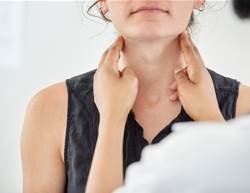Monkeypox is dominating headlines across the world as cases continue to spread. To date, there are two confirmed cases in Australia, with NSW the first to record a patient with symptoms and one other in VIC — however as we are still in the early days of monkeypox, more suspected cases may come to light. And as cases increase, it’s understandable to wonder how monkeypox spreads.
Monkeypox is not nearly as infectious as COVID-19, according to Dr Thomas Russo an infectious disease expert, but cases have shown up across the world in areas where the disease isn’t usually seen. Accurate global estimates are tough to come by, but the World Health Organization (WHO) has the global case count at 92 as of May 21.
Read on to learn everything you need to know about the disease from infectious disease experts —including how it spreads, symptoms, and preventative measures.
How does monkeypox spread?
There has been a lot of questions about this lately, given that it's suddenly shown up in areas where it’s not usually present. While monkeypox is endemic (meaning, it’s constantly around at some level) in central and West Africa, it’s unusual for it to be seen in so many different areas at once. So how do you catch monkeypox?
Monkeypox is usually contracted by coming into contact with the virus from an infected animal, person, or contaminated object. The virus can enter the body through broken skin or mucous membranes. It is also possible to get the disease from being bitten or scratched by an infected animal, or by exposure to body fluids or lesions from infected people.
Experts also say that monkeypox can spread through fomites, which are objects, surfaces, or materials that can carry infectious particles. “Fomites are inanimate objects such as articles of clothing that could harbour a pathogen and can be a route of transmission for monkeypox,” infectious disease expert Dr Amesh Adalja says.
Even bedsheets can be a fomite, according to disease expert and professor Dr Thomas Russo. “Bedsheets could become contaminated with a combination of fluid or scabs from a person infected with monkeypox,” he says. “Another person could come into contact with those sheets or bedding through micro-breaks in their skin and become infected.”
While fomites can play a role in the spread of monkeypox, this is something you’re unlikely to pick up on the street or at the grocery store, unlike COVID.
Is monkeypox spread through sex?
The current global outbreak seems to have a link to sex, but is monkeypox an STI? Public health officials have made a point to say that monkeypox is not a sexually transmitted infection though the virus has mostly shown up in men who have sex with men and lesions in some cases have been restricted to the genital area, which “suggest transmission occurred during sexual intercourse,” according to the European Centre for Disease Prevention and Control (ECDC).
But Dr Adalja points out that it’s possible to spread monkeypox through sexual contact without it being an STI. “Sexual interaction involves very close contact and pathogens can use that contact to transmit, even if they are not strictly sexually-transmitted infections,” he says. “Skin-to-skin contact and exposure to respiratory droplets that can facilitate transmission in these encounters.”
“It’s not the sexual act that is so important, it’s more the skin-to-skin contact.”
An STI usually means that a virus or disease is spread through sexual fluids, Dr Russo explains. “If you’re being semantically correct, it’s technically not a sexually transmitted infection,” he says. “You could go through that intimate contact without having sexual intercourse and still acquire the infection through the intimate contact with skin and/or respiratory droplets that are produced through kissing.”
“Monkeypox is not a virus that infects the sexual organs the way gonorrhea or syphilis does,” says Dr. Schaffner, an infectious disease specialist. “It’s not the sexual act that is so important, it’s more the skin-to-skin contact.”
What are the symptoms of monkeypox?
Monkeypox usually starts with flu-like symptoms including fever, headache, muscle aches, backache, swollen lymph nodes, chills, and exhaustion. It typically lasts for two to four weeks.
A few days after the original symptoms show up, a person will develop a rash that starts on the face and spreads to other areas of the body. (However, Dr Russo points out, that some people with recent cases of monkeypox have had a rash that is just restricted to the genital area.) The rash usually goes through different phases before it clears. Those include:
- Macules (flat, discolored bumps)
- Papules (raised area of skin)
- Vesicles (blisters)
- Pustules (small bumps that contain pus)
- Scabs (dry, crusty bumps)
How to protect yourself from monkeypox
In general, experts say most people don’t need to worry about monkeypox. “The threat of monkeypox from this outbreak is low to the general public,” Dr Adalja says. “If there are people who are at risk because of their sexual activities, they should be aware of the fact it is spreading within a sexual network and be cognizant whether or not anyone they’ve been around has lesions consistent with monkeypox.”
Dr Russo also recommends that you avoid “close intimate contact” with someone who has symptoms or that you know has had contact with someone with monkeypox. “It does take a large exposure to get it,” he says. “This is not something you’ll pick up by passing someone on the street.”
Overall, Dr Russo expects that monkeypox cases around the world will fade soon. “Hopefully this will burn itself out,” he says.










